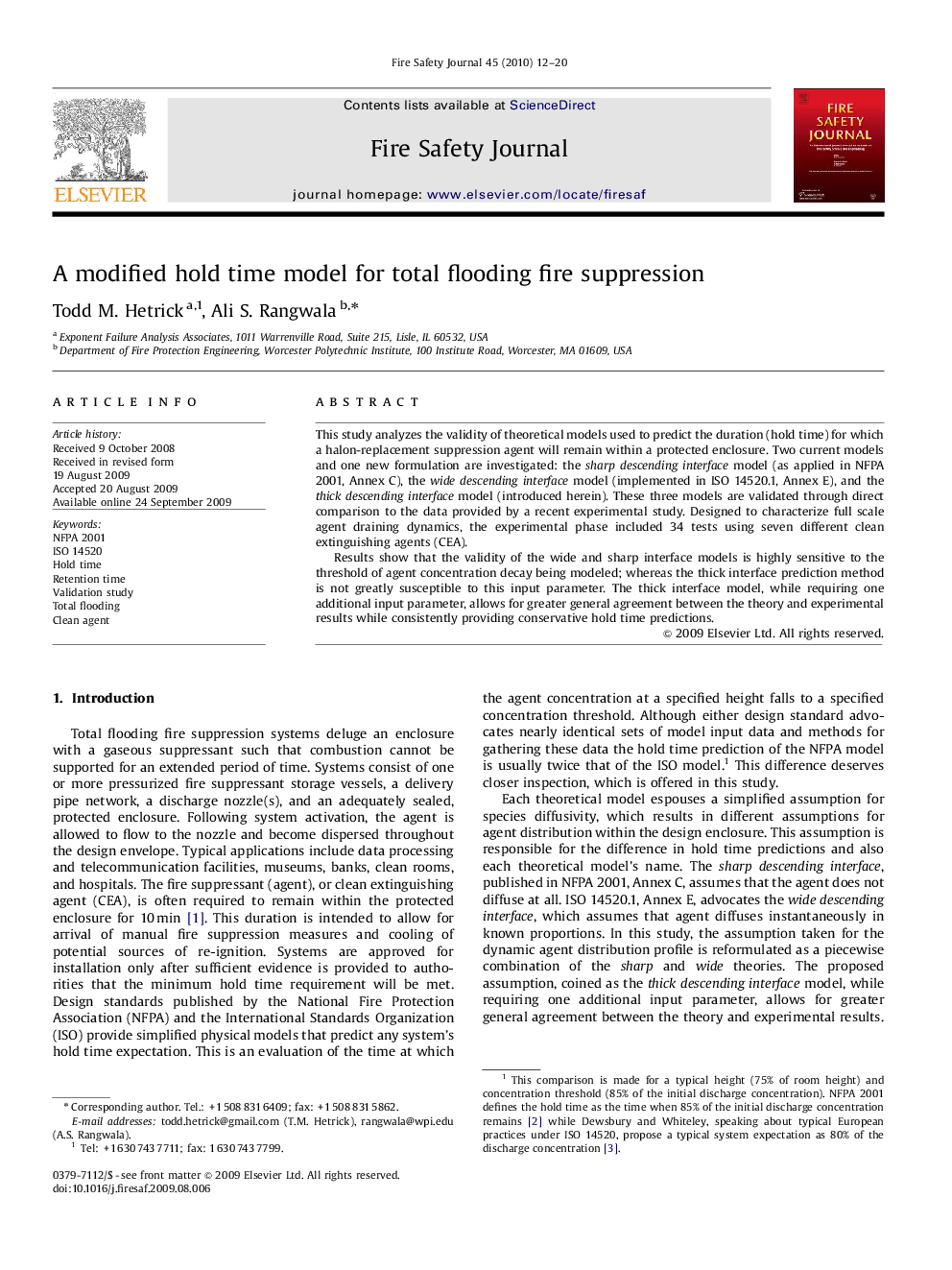| Article ID | Journal | Published Year | Pages | File Type |
|---|---|---|---|---|
| 270406 | Fire Safety Journal | 2010 | 9 Pages |
This study analyzes the validity of theoretical models used to predict the duration (hold time) for which a halon-replacement suppression agent will remain within a protected enclosure. Two current models and one new formulation are investigated: the sharp descending interface model (as applied in NFPA 2001, Annex C), the wide descending interface model (implemented in ISO 14520.1, Annex E), and the thick descending interface model (introduced herein). These three models are validated through direct comparison to the data provided by a recent experimental study. Designed to characterize full scale agent draining dynamics, the experimental phase included 34 tests using seven different clean extinguishing agents (CEA).Results show that the validity of the wide and sharp interface models is highly sensitive to the threshold of agent concentration decay being modeled; whereas the thick interface prediction method is not greatly susceptible to this input parameter. The thick interface model, while requiring one additional input parameter, allows for greater general agreement between the theory and experimental results while consistently providing conservative hold time predictions.
